Plenty Of Parts: 1973 Opel GT
Some show cars and styling exercises that are produced by car manufacturers are destined to remain little more than concepts, while some eventually see the light of day as production cars. The Opel GT fits into the latter category. After appearing before the public for the first time in 1965, the little German classic started rolling down the production line in 1968. This 1973 model is from the final year of GT production, and it is a solid classic that is in need of a refresh. It comes with a nice collection of spares and parts to assist the next owner on this journey, and once restored, it could be a striking little car. Located in Hamilton, Virginia, you will find the Opel listed for sale here on Craigslist. If you would like to park this classic in your workshop, then all you need to do is be willing to part with $5,200 and it could be yours. I do have to say thank you to Barn Finder Rocco B for spotting this cool classic for us.
The owner describes the Strato Blue paint that the Opel wears as being a “10 footer.” The car underwent restoration some years ago, but the owner feels that it could do with a bit of a refresh. The panels are essentially straight, with no significant dings and dents. The pop-up headlights open and close as they should, but the headlights themselves don’t operate. As far as rust issues are concerned, this doesn’t appear to be a problem. The panels themselves appear to be good, while the underside of the vehicle looks nice and solid. I do agree with the owner’s assertion that it would be a good idea to give the underside a serious clean and rust preventative treatment because there is some surface corrosion present. The trim and chrome appear to be good, while the same is true of the glass. A nice bonus is the inclusion of a number of additional body components, including some spare doors and some glass.
The presentation of the GT’s interior looks to be pretty good, and this is one area of the car that has survived well since the restoration was performed. It appears to be very original, and it’s nice to see that the radio hasn’t been removed to fit an aftermarket stereo. This was a fairly common occurrence, and replacement radios are an item that has become hard to find. The dash is free of cracks, the carpet presents well, while all of the upholstered surfaces would seem to be free of rips and splits. About the only area where the Opel is exhibiting any age is on the faces of the rocker switches. These are showing the sort of wear that is just part-and-parcel of longterm usage. The good news is that there are companies that can restore these to their original condition, although if the next owner is feeling adventurous, this is a task that they could tackle for themselves.
The Opel GT was available with two engine choices, and while the “baby” engine is the rarer of the two, the larger 1,897cc 4-cylinder engine was chosen by the majority of buyers in all markets. In Europe, this was an engine that punched out 102hp, but for the American market, the figure was reduced to 90hp. This power finds its way to the rear wheels via a 4-speed manual transmission, while stopping is accomplished by power front disc brakes. Tipping the scales at 2,121lbs, the GT is no heavyweight, and while performance figures aren’t startling, they are still pretty acceptable. The engine that is fitted to this car isn’t original, with the car receiving a transplant at some point in the past. This new engine started life in a 1972 GT, but there would be no difference in the specifications between the two powerplants. It is said to run and drive well, and the fitting of a Weber carburetor in place of the original might have unleashed a few extra ponies. The owner does admit that the transmission jumps out of third gear, but a replacement transmission is included in the sale. Apart from that and the previously-mentioned body components, the new owner will also receive 10 containers full of parts. Some of these parts are said to be new, while some are used. Regardless, they do represent a nice bonus.
Conventional wisdom states that during its production life, 70,564 GTs found their way to the USA. Today, a good example will fetch around $20,000, but a pristine car can sell for figures closer to $30,000. It is extremely rare to see one push beyond that, but if you look at the sale price of this car, then factor in the work that would be required to return it to a high standard of finish, then it is a project car that could make pretty sound economic sense.
Auctions Ending Soon
 2002 Subaru Impreza WRXBid Now2 days$333
2002 Subaru Impreza WRXBid Now2 days$333
 1975 Chevrolet Corvette ConvertibleBid Now2 days$4,000
1975 Chevrolet Corvette ConvertibleBid Now2 days$4,000
 1964 Ford F-100 Camper CustomBid Now2 days$2,000
1964 Ford F-100 Camper CustomBid Now2 days$2,000
 2006 Jeep Wrangler SportBid Now4 days$10,500
2006 Jeep Wrangler SportBid Now4 days$10,500
 1974 Datsun 260ZBid Now6 days$750
1974 Datsun 260ZBid Now6 days$750
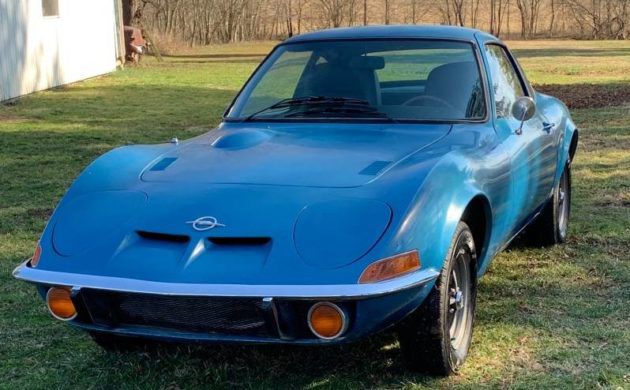
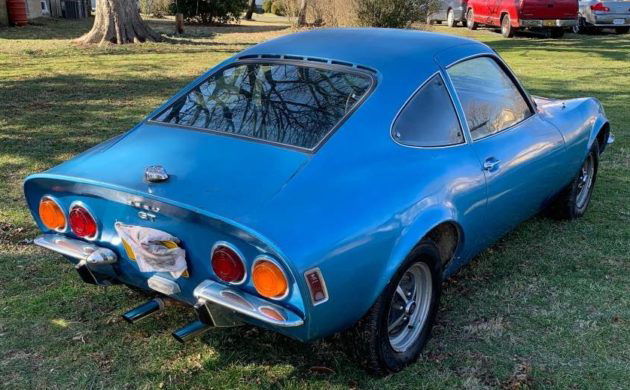
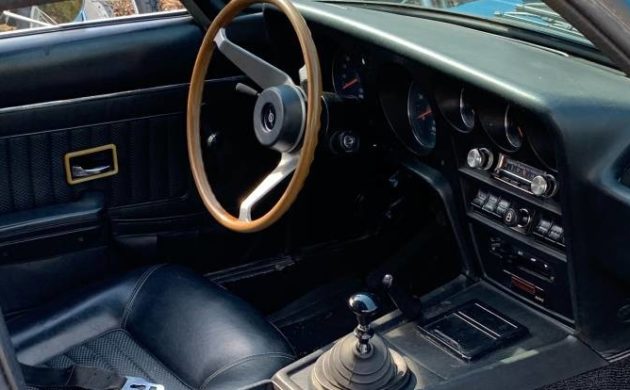
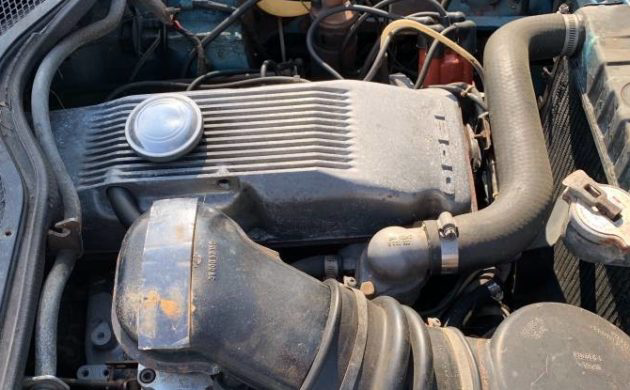
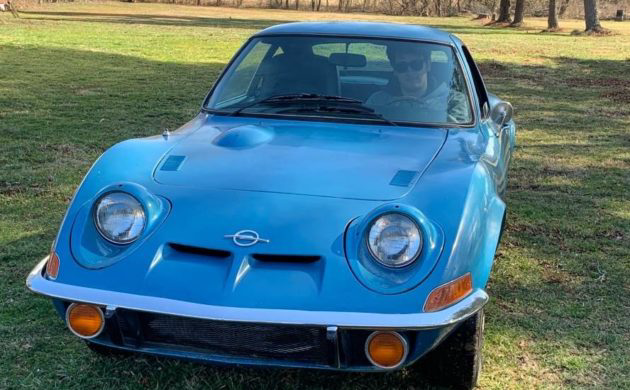

Comments
So Opel debuted this body in ’65, 3 years before the Gen 3 Corvette came out in ’68?
When the Opel GT was announced in the car mags, the photos were of the much prettier prototype – Look it up. I ordered one as soon as possible and got an early ’69. I was lucky enough to see the prototype and the targa live at the now-defunct Rosso e Blanco museum near Frankfurt early in the 2000s. As production progressed, the actual model appeared in brochures and was a little disappointing but I kept the order. Loved the car, autocrossed it hard for 13 years and it never left me stranded.
I hate it whenever someone refers to an Opel GT as a Mini-Vette. Many cars have similarities but are unique in their own right. Personally I liked the styling of the Opel GT much better than the Corvette. Aside from me, have you ever heard anyone refer to a Corvette as a bloated Opel GT? Just having some fun here, I don’t want to offend any Corvette owners.
Having owned both, as well as the other “semi twins”, the Manta and Camaro, no offense taken!
Yes, that’s true. The C3 Corvette is a copy of the Opel GT.
Not really. Both the Opel GT and the Mako Shark II Corvette were styling exercises introduced in 1965. The Mako Shark Corvette I (1), has similar styling cues dating back to 1963, they both seemed to have been developed simultaneously and independently. If someone want to claim one was a copy, the case can be made that the Opel is the copy.
Steve R
The first appearance of the distinctive peaked fender line was on the 1963-65 Chapparrals of Jim Hall & Hap Sharp. Allegedly not built by GM (wink, wink) during the racing ban it was fairly obvious where a significant portion of the technology and money was coming from. Not to take anything away from Hall & Sharp who were quite accomplished racers and engineers, they had help.
Where does that leave the 64 Pontiac banshee? If the prototype was produced for 64, it must have been in production for at least a few years correct? I’ve been trying to figure out the origins for years.
Fun to drive, easy to work on, not seen everyday, great daily driver, needs freshening up, AND a reasonable price; seems to me that this could be the poster child for what this hobby is all about! If I had the room I’d be taking it home today.
“….not seen everyday…”.
I live in North Florida and see one of these several times a month, it’s a nice yellow over black example.
I am guessing it could eventually be a candidate for restoration but for now it is just sitting outside a heavy truck repair shop.
I remember when these were new, pretty cool little cars although I never paid any attention to them at the time. Now, I think this is a cool find.
$2500?
I had a few back in the 90’s. Great driving cars. But… BRING A MAGNET and check them pretty lower body panels. Rusted like a Honda, and attracted bondo like moths to fire!
Owned 2 back in the early and mid 70s, a red one and a yellow one. Damn fun cars to drive, handled quite well and while not Gforce fast they were quick with the larger engine option. I was always envious of the Z cars that came out about the same time and after the yellow Opel GT I got a ’77 280 Z… still have that one. If I had the cash and room I’d grab this one for old times sake. Guaranteed to get a crowd at car shows.
Looks like a good candidate to get into the hobby. This one is using the tail lights that were on 1972 and earlier models. The bumpers look very good. These did attract the tin worm. Make sure to check out the frame rails, inner fender area on front passenger side, battery tray in front of radiator, and the entire underside. Headlight wiring typically physically wears due to twisting action of the rotating headlights. Great support in parts with OpetGT Source and Opels Unlimited.
Those opposing movement wipers on this car make no sense – when they are
parked they create a big “blind spot:” on the center part of the windshield – the direct opposite of what hidden wipers did back then.